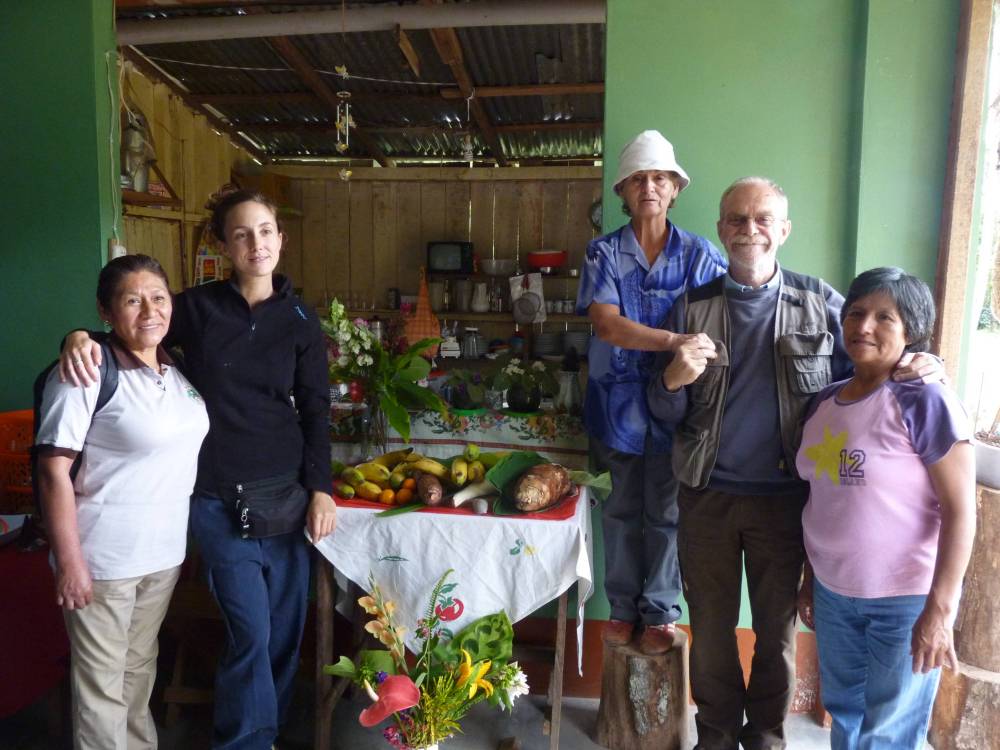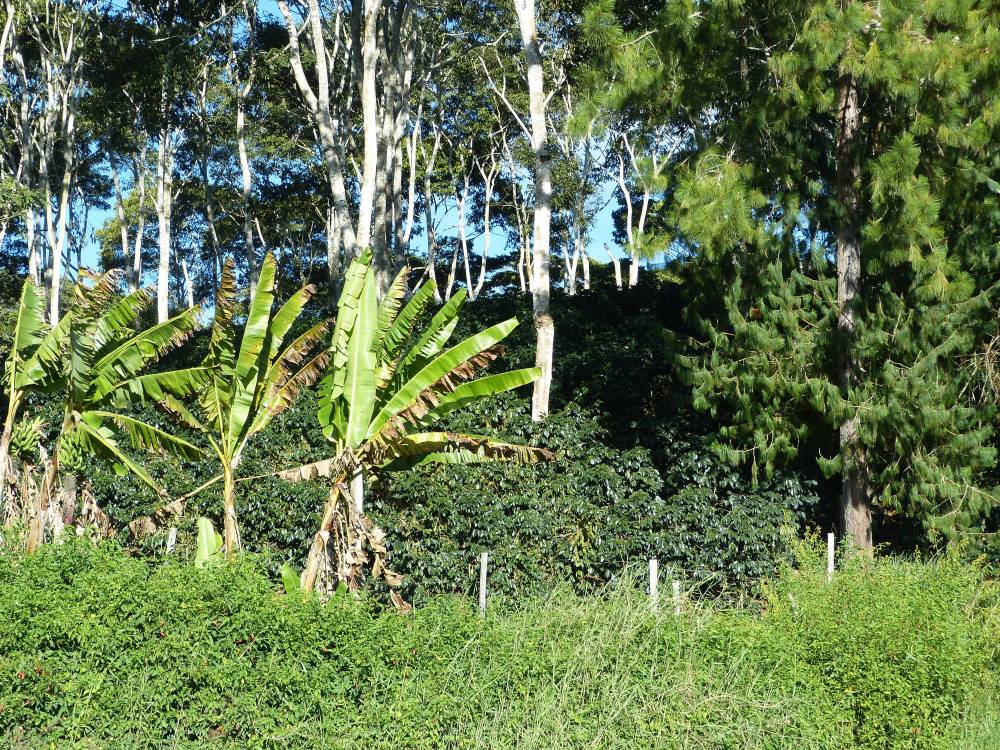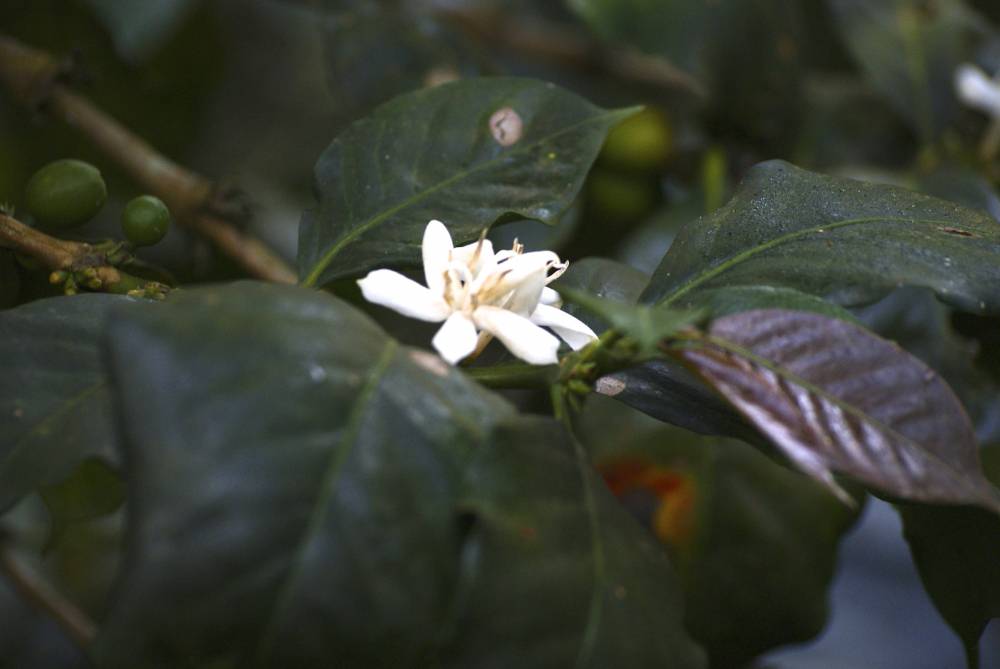CACE Alto Palomar
San Luis de Shuaro district, Chanchamayo, Junín, Perù






Amidst colourful butterflies and forest delicacies
We were warmly greeted by the women of the CACE Alto Palomar Cooperative. They had prepared a wonderful lunch of rollo de pituca with legumes and eggs, pachamanca (“earthen pot”, from the Quechua pacha (earth) and manka (pot)), a typical Peruvian dish consisting of stone-cooked cuy (guinea pig cooked on pre-heated stones), mashed bananas and legumes, banana rice, boiled yucca with fresh cheese, coffee jelly with Chantilly cream and coffee pudding. All served with an excellent orange juice in the company of our charming hosts, especially Ida and Iris (to whom we promise we will send a photo of the iris flower, since she is not familiar with it). Before sitting down to eat, they led us to a small table specially prepared for us with all kinds of fruit and vegetables, explaining the correct ways to use banana for frying, banana to be eaten raw (short and chubby), orange, orange lemon, pituca, yucca and, last but not least, flowers as a gift for us!
At this point the president, Adolfo, tells us his story. Originally from an Andean community, he moved to Alto Palomar for love. His mother-in-law was a pioneer in the area; she arrived when the forest was still virgin and the only way to enter it was with a machete. Adolfo began to cut wood to sell in the nearest village, Villa Rica. He carried it to the village on 25 donkeys and the first in the line always wore a cowbell, since the forest was so dense that without any sound to guide them the line of donkeys would eventually have been lost.
Organic coffee cultivation in the heart of the Amazon







Where does the coffee we have selected come from?
The Amazon River basin in Peru is the production area of a coffee that is as excellent as it is little known. Its lack of fame is probably also due to transportation problems and to the critical political situation in the area over the last thirty or so years, with the Sendero Luminoso terrorist group preventing cooperatives of small producers, such as Alto Palomar with more than 100 producers, from working in tranquility.
This coffee is grown in the shade of undergrowth in which species native to the region predominate, so ensuring the maintenance and regeneration of indigenous biodiversity. Visiting the estate you get the impression of entering a pristine place, where any kind of insects, among which wonderful butterflies, surround the coffee plants as a sign of the full environmental and ecosystem care.






How is this coffee produced
The Cooperativa Agraria Cafetalera Ecologica Alto Palomar has today about 120 farmers growing coffee according to the strict criteria of the organic farming, handpicking the cherries and “wet” processing the beans in fermentation tanks.
The cooperative has been developed in all its stages by Felix Marin, an agricultural engineer who has always committed himself to the social progress associated to high quality productions. Thanks to CSC – Associazione Caffè Speciali Certificati’s support, a laboratory for espresso cupping has been equipped, through which we could teach the farmers the espresso tasting and work towards the improvement of their coffee’s organoleptic properties.
Some data
- Botanical variety: 55% Caturra, 30% Typica, 15% others
- Processing: washed, in fermentation tanks
- Harvest: April – July
- Drying: in ovens
- Altitude: 1.200 – 1.800 m asl
- Quality/screen: HG (high grown) / 18




